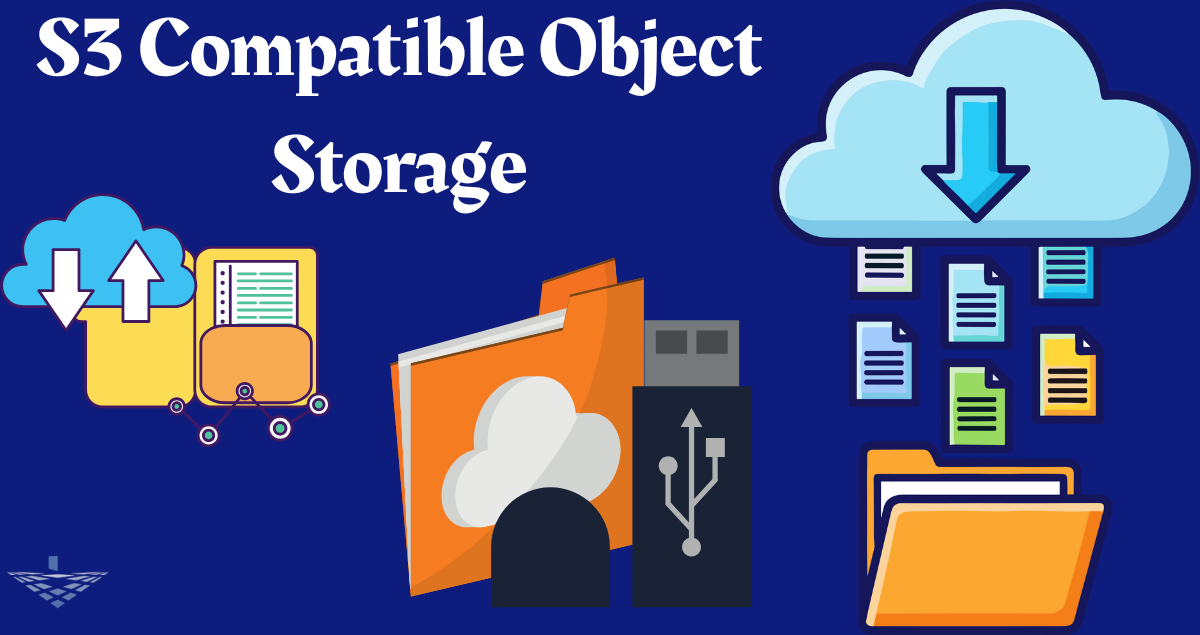In an era where data is the driving force behind every enterprise, ensuring its safety is non-negotiable. Despite advanced security systems and multiple backup layers, modern cyber threats are becoming more aggressive, targeting everything from production servers to connected replicas. The most effective strategy that enterprises are turning to is Air Gap Backup — a method that isolates critical data copies from live networks, ensuring that no malware or ransomware can ever reach them.
Why Businesses Need a Stronger Backup Strategy
Most organizations use connected backup systems that continuously sync with primary data sources. While this offers convenience and quick restores, it also creates a single point of failure. If ransomware infiltrates the primary network, it can spread to connected backups instantly, encrypting or corrupting them. Once backups are compromised, the company loses all recovery options, forcing them into downtime, financial loss, or even ransom payments.
This challenge has made air-gapped protection more relevant than ever. By removing network connectivity entirely, businesses gain a “clean room” for their data — a safe copy that cannot be touched, altered, or erased remotely.
What Is Air Gap Backup and How It Works
An air-gapped backup is a data protection technique where one or more backup copies are kept completely disconnected from all network access. This can be achieved through physical separation (using removable drives or offline servers) or through logical disconnection (where systems are automatically isolated after data transfer).
The idea is simple but powerful — if data isn’t accessible over the network, it can’t be attacked. This level of isolation provides unmatched protection from ransomware, insider threats, and even accidental data deletion.
Physical vs Logical Air Gaps
Physical Air Gap:
In this model, data is written to media such as tapes, external drives, or standalone servers. Once the backup is complete, the storage device is physically removed or powered down. Because it’s not connected to any system, it’s immune to external attacks.
Logical Air Gap:
A logical air gap uses automation to disconnect a backup system from the network after data transfer. During backup windows, the connection is active, but as soon as the process finishes, network interfaces are disabled. This provides the same security as physical separation but with greater operational convenience.
Benefits of Air Gap Backup
1. Complete Ransomware Immunity
Ransomware depends on connectivity. By keeping critical backups offline, air-gapped systems ensure that malicious encryption commands cannot reach them. Even if all online systems are compromised, isolated copies remain untouched and fully restorable.
2. Resilience Against Insider Attacks
Not all data breaches come from outside. Human errors, misuse of privileges, or sabotage from within can destroy online backups. Air-gapped storage prevents unauthorized access by limiting connectivity and requiring physical control for any modification.
3. Immutable Data Copies
Once data is stored in an air-gapped environment, it can’t be modified until manually reconnected. This guarantees that backups remain in their original, unaltered state — a key requirement for forensic analysis and regulatory audits.
4. Compliance with Industry Standards
Highly regulated industries such as healthcare, finance, and government agencies are increasingly adopting air-gapped storage to meet compliance frameworks like HIPAA, GDPR, and ISO 27001. Air-gapped data ensures traceability, immutability, and tamper-proof storage.
5. Fast and Reliable Recovery
When a disaster occurs, quick recovery is crucial. Air-gapped data remains clean, verifiable, and ready for immediate restoration, helping organizations minimize downtime and resume operations faster.
Implementing Air Gap Backup in Enterprise Environments
Deploying air-gapped systems requires careful planning and proper integration into existing infrastructure. Here’s how enterprises can do it effectively.
Step 1: Identify Critical Assets
Determine which data and applications are essential to business continuity. These assets should have top priority in your air-gapped Backup plan.
Step 2: Choose Between Physical or Logical Air Gaps
- Physical air gaps are ideal for maximum security and long-term archival storage.
- Logical air gaps work better for dynamic environments where data changes frequently and automated backups are required.
Step 3: Establish Automated Backup Schedules
Automation tools can handle backup initiation, verification, and isolation. This reduces human error while ensuring that air-gapped copies are always up to date.
Step 4: Encrypt and Verify Data
Always encrypt data before transferring it to the air-gapped environment. Verification processes should confirm the integrity of stored data after each backup cycle.
Step 5: Test Restoration Scenarios Regularly
Backup strategies are only as good as their recovery results. Perform routine recovery tests to ensure that stored data can be restored quickly without corruption. While traditional backups are convenient, they lack the isolation that air-gapped systems provide. A balanced approach — using both — often delivers the best results: fast online recovery plus offline disaster resilience.
Use Cases for Air Gap Backup
1. Financial Services
Banks store daily transaction logs and customer data in air-gapped environments to prevent tampering or ransomware-related shutdowns.
2. Healthcare Providers
Hospitals rely on isolated backups to protect sensitive patient records, ensuring compliance with healthcare privacy laws.
3. Industrial and Manufacturing Systems
Factories keep operational configurations and production data offline to protect against attacks on industrial control systems.
4. Research and Education Institutions
Universities and labs safeguard decades of research data by maintaining air-gapped copies, ensuring intellectual property is preserved.
5. Government and Defense
Government agencies rely on air-gapped systems to secure confidential information and critical infrastructure data from espionage and sabotage.
Overcoming Challenges in Air-Gapped Systems
Managing Costs
Implementing air-gapped systems requires upfront investment in hardware and storage media. However, modular systems and scalable designs can reduce long-term costs significantly.
Operational Complexity
Manually managing backups can be time-consuming. Automating backup scheduling, disconnection, and verification makes the system more efficient and consistent.
Limited Accessibility
Because air-gapped systems are isolated, retrieving data requires manual reconnection or administrative approval. Organizations must plan backup windows and recovery workflows carefully.
Data Synchronization
Frequent data changes may lead to outdated offline copies. Synchronization schedules should be aligned with data modification rates to ensure consistent coverage.
Best Practices for Effective Air Gap Backup Management
- Use the 3-2-1 Rule: Keep three copies of data on two different media types, with one copy stored offline.
- Encrypt Everything: Use strong encryption both during transfer and at rest.
- Implement Access Controls: Restrict access to air-gapped environments to a few trusted administrators.
- Regular Auditing: Track every interaction with the air-gapped system to maintain full visibility.
- Combine with Immutability: Store air-gapped data in an immutable format to prevent unauthorized modifications.
Future of Air-Gapped Data Protection
As data volumes increase, manual air-gapping is evolving into intelligent, automated systems. Advanced solutions integrate machine learning to detect unusual network patterns and automatically trigger isolation. Future systems will likely blend automation, immutability, and zero-trust frameworks to create self-healing, autonomous backup ecosystems.
Cloud providers and hardware vendors are already introducing hybrid models that offer both online speed and offline isolation. In the near future, air-gapped protection will become a standard feature of enterprise-grade backup systems.
Why Air Gap Backup Is a Business Necessity
In today’s environment, where downtime costs millions per hour and ransomware can cripple global supply chains, no organization can afford to rely on connected-only backups. Isolating at least one copy of business-critical data provides insurance against the worst-case scenario — total data loss.
Air Gap Backup isn’t just a cybersecurity strategy; it’s a business continuity enabler. It guarantees that even if every system is compromised, a clean, untouchable copy of your data always exists.
Conclusion
No defense is perfect, but isolation is timeless. Air Gap Backup offers one of the most reliable ways to ensure data survival in the face of cyberattacks, hardware failures, and human error. By disconnecting critical backups from the network, organizations create an unbreakable recovery layer that protects business continuity, compliance, and reputation.
Whether through physical devices or automated disconnection systems, air-gapped backups ensure that every business has a clean copy ready for recovery — no matter how severe the breach.
FAQs
Q1: How often should Air Gap Backups be refreshed?
The ideal schedule depends on data activity, but most enterprises update air-gapped copies weekly or after major system changes.
Q2: Can Air Gap Backup integrate with existing backup tools?
Yes. Many modern backup systems include built-in support for logical air-gapping and offline replication.
Q3: Is it possible to automate Air Gap Backup?
Absolutely. Scripts or backup management software can automatically disconnect storage devices after backups complete.
Q4: What’s the difference between Air Gap Backup and immutable storage?
Immutable storage prevents data modification, while air-gapping physically or logically isolates it. Combining both delivers maximum protection.
Q5: Who benefits the most from Air Gap Backup?
Organizations handling sensitive or regulated data — such as banks, hospitals, and government agencies — gain the most from implementing air-gapped systems.
















Leave a Reply